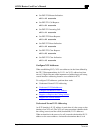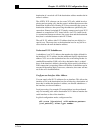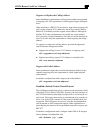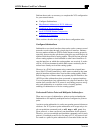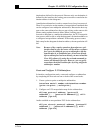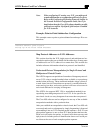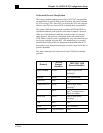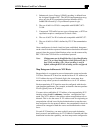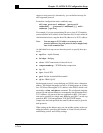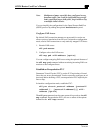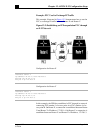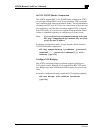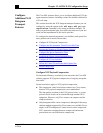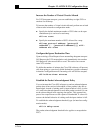
AI2524 Router Card User’s Manual
Page 12-18 August 1997
2524UM
1. Subnetwork Access Protocol (SNAP) encoding is defined from
the Assigned Numbers RFC. The AI2524 implementation recog-
nizes only the IETF organizational unique identifier (OUI)
0x0000 00 followed by a 2-byte Ethernet protocol type.
2. The use of 0x81 for CLNS is compatible with ISO/IEC 8473-
3:1994.
3. Compressed TCP traffic has two types of datagrams, so IETF en-
capsulation requires a multiprotocol virtual circuit.
4. The use of 0xCC for IP is backwards-compatible with RFC 877.
5. The use of 0x01 for PAD is defined by ITU-T Recommendation
X.29.
Once a multiprotocol virtual circuit has been established, datagrams
on the virtual circuit have protocol identification data before the actual
protocol data; the protocol identification values are the same used by
RFC 1356 in the CUD field for an individual protocol.
Note: IP datagrams can be identified with a 1-byte identification
(0xCC) or a 6-byte identification (0x80 followed by the 5-
byte SNAP encoding). The 1-byte encoding is used b
default, although the SNAP encoding can be configured.
Map Datagram Addresses to X.25 Hosts
Encapsulation is a cooperative process between the router and anothe
X.25 host. Because X.25 hosts are reached with an X.121 address (an
X.121 address has up to15 decimal digits), the router must have
means to map a host's protocols and addresses to its X.121 address.
Each encapsulating X.25 interface must be configured with the rele-
vant datagram parameters. For example, an interface that encapsulates
IP will typically have an IP address.
You must also establish the X.121 address of an encapsulating X.25
interface using the
x25 address
interface
configuration com-
mand. The X.121 address is the address where encapsulation calls ar
directed. This is also the source X.121 address used for originating an
encapsulation call and is used by the destination host to map the sourc
host and protocol to the protocol address. An encapsulation virtual cir-
cuit must be a mapped at both the source and destination host inter
faces.
For each X.25 interface, you must explicitly map each destination
host's protocols and addresses to its X.121 address. If needed and if the
destination host has the capability, one host map can be configured to



